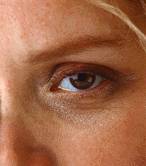
MONDAY, Jan. 17 (HealthDay News) — Few facial skin creams that promise “broad-spectrum” sun protection actually measure up, according to new research.
Dermatologists evaluated 29 top-selling daytime moisturizers claiming to provide broad-spectrum protection from the sun’s ultraviolet rays and found only a few offered reliable protection from harmful UV-A rays, which can penetrate glass.
“The vast majority of the products out there don’t seem to provide adequate UV-A protection,” said study leader Dr. Steven Wang, director of dermatologic surgery at Memorial Sloan-Kettering Cancer Center in Basking Ridge, N.J.
Most of the creams “don’t contain the right combination of ingredients, and they don’t contain the adequate concentration of ingredients,” he said.
The study results are reported in a letter published online Jan. 17 in Archives of Dermatology.
Broad-spectrum UV coverage means the product shields users from UV-A and UV-B exposure, both of which contribute to premature skin aging and skin cancer.
Testing was needed, Wang said, because the U.S. Food and Drug Administration doesn’t regulate UV-A protection in sunscreen products.
The sun protection factor (SPF) printed on sunscreen containers refers to how well products protect against UV-B rays, which do not penetrate glass.
Regulations to set UV-A ratings have been pending for years, and the lag is unfortunate, because protection from both sources of ultraviolet rays is crucial, Wang and other experts say.
Many women apply an SPF-rated facial cream as their only sunscreen source, believing that if it says broad-spectrum they have complete protection, Wang said. But those who spend most of their day indoors may be exposed to harmful UV-A rays that pass through office and car windows.
According to product labels, the SPFs of the creams studied ranged from 15 to 50. Prices climbed from $3 to $64 an ounce.
The researchers compared the ingredients and the concentration of ingredients with their criteria for adequate UV-A protection. For effective coverage, they said products should contain a combination of more than 2 percent avobenzone and more than 3.6 percent octocrylene with or without ecamsule at 2 percent and/or zinc oxide at more than 5 percent. (A concentration of 7 percent to 10 percent octocrylene is actually better, Wang said.)
”Three or four passed” their test, he said.
Six products, including the most expensive one, contained no active ingredients for shielding UV-A, the authors noted, pointing out that price is not an indicator of protection.
The study received no manufacturer funding, and Wang did not disclose brand names in his report. Previously, he has received research funding from L’Oreal, a sunscreen maker.
The concern over the lack of adequate UV-A protection is justified, said David Andrews, senior scientist at the Environmental Working Group (EWG), which evaluates sunscreens regularly and posts the results.
“We completely agree with the concern raised on the lack of UV-A protection in face cream moisturizers,” said Andrews, who reviewed the study but was not involved in it.
EWG and other environmental-health advocates have urged the FDA to finalize regulations for UV-A coverage. In 2007, changes were proposed for sunscreen labels, with a rating system suggested to denote UV-A coverage, but the proposed changes haven’t been finalized. The current regulations date to 1978.
Until tighter government regulations spell out what ”broad-spectrum” coverage actually means, Wang tells consumers who buy moisturizers to study product labels and look for the combination of ingredients outlined in his study.
According to the Skin Cancer Foundation, one of every five Americans will develop skin cancer, the most common form of cancer in the United States.
More information
To learn more about sunscreens, visit the Environmental Working Group.

